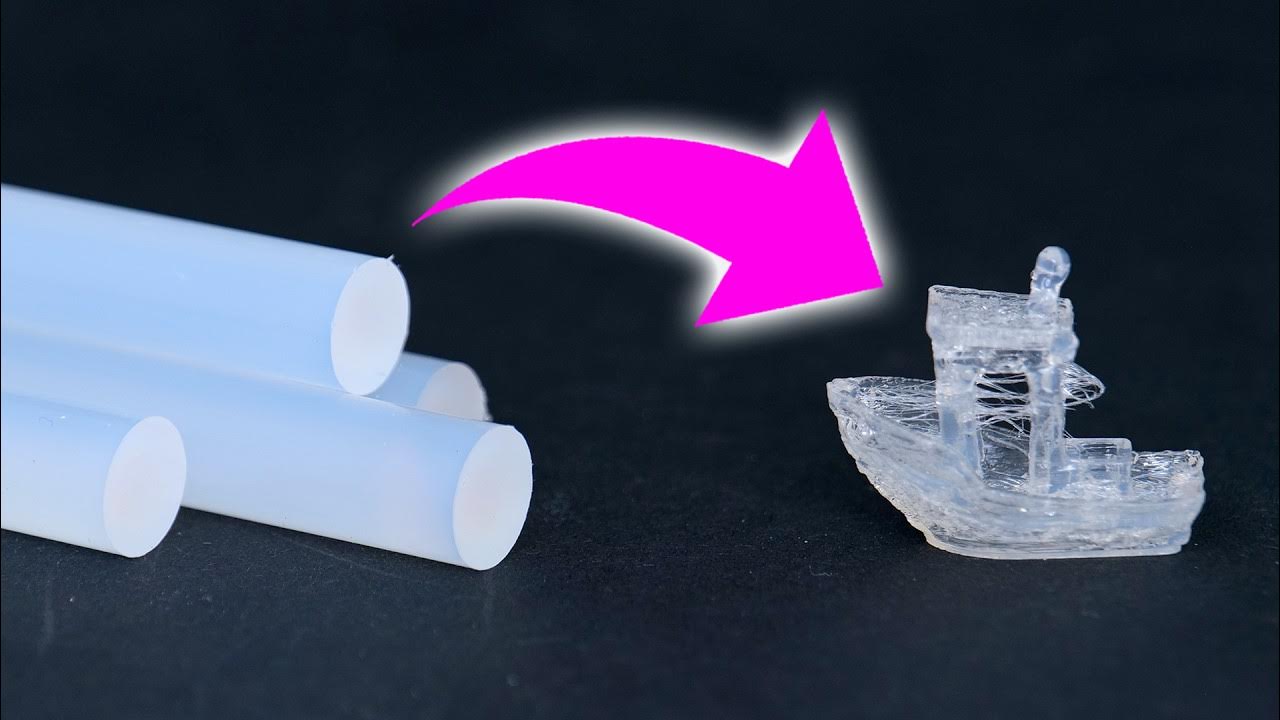You know one of the first filaments was in fact EVA, right?
Its application as a hotmelt glue made it an easy and cheap material to source.
“Worst and cursed” (paraphrasing Stephan there,) there’s a few caveats- it’s best as rods not filament, and large nozzles or it gets messy as hell.
Huh, til.
Also, it was interesting to see all the issues he had with it, but i can see its uses. Like you said though, messy as hell
The history behind it was that EVA was one of the first thermoplastics developed; at the time things were getting started, people used it because it was available and cheap;
I find the the idea of using it like this to create patches or something interesting, though. I haven’t looked at EVA as a material since highschool. And accessibility to 3d printing is phenomenal to what it used to be. This was around the same time that What-His-Name-Built-Stratasys still had their patent for FFF machines. That printer was so goddam awful… the only reason I’m proud of it is… it actually could turn out vaguely recognizable shapes. (lexmark inkjet, I set it up to move the z axis by moving the bed far enough to hit a switch that dropped it down…) (i built it after I wrote a paper on the things… and felt like maybe I could.)
The entire history of 3d printing as a household thing is fascinating. It parallels computers in some very interesting ways.
He’s definitely not wrong about the issues- there’s a reason it was abandoned almost as fast as it was picked up. EVA on it’s own might not be so bad, but the glue sticks have additives to you, know improve their glue-iness.
edit- for his application where he only really needs a layer, I might almost consider taking a stick or shreddings and a heat gun to melt it onto a bed. a craft knife to cut out the shapes later, but yeah.
Oh wait, youre giving me great theoretical ideas here. I didnt think about it untill now but ( atleast in central europe ) a lot of cosplayers use eva in its foam form to craft a lot of their costumes or props. If a printable eva exists, they would no longer need to do the cutting and puzzling of eva foam boards. Print it like how you need it!
I can see why you wrote a paper on it and is very cool to hear about!
Also never heard the stratasys story before lolI would suggest for EVA foam; you could print skeletonized forms in PLA and gluing to that. Yeah, it’d be super slick to be able to just print the stuff, but overall, rigid plastic is awkward and uncomfortable to wear.
You can sandwich the skeleton form between layers. A coarse sanding will get barges to hold every bit as well, too. And the skeleton can offer a more-solid foundation for spikey-things and such, too. And if the form is a difficult shape to print, you can also soften it quite easily with a heat gun and drape it on a form- or, if it’s a sheet use your heat bed set above 70-80 (for pla,). Bad for printing. Great for post processing.
(Also, have you made a vacuum table? You can make a cheap one using that corrugated plastic signboard stuff, and a shop vac. You can also set up a space heater as the heating element using MDF or plywood as a box frame- or a gun. You can make helmets very easily using a vac table and a 3d printed bust that’s the same size as your head.)
You can make helmets very easily using a vac table and a 3d printed bust that’s the same size as your head
I’m definitely going to try this. All this time I’ve just been sticking my head in the vac table.
It’s easier than printing two materials: e.g. colorFabb varioShore TPU
low print temperature: “solid” material
high print temperature -> foaming agent reacts -> light weight & soft material
There are also other technologies out there including toolchangers with 2k (2 component mixing) print heads.
Hah I was literally just thinking of this. My thought was an extruder based on the papilio extruder but obviously larger diameter, and some sort of stick loader with optical sensor to ensure there are always a couple stacked leading into the extruder. Some sort of gap detector code could potentially retract and deretract to drop the upper stick into contact with the currently melting one.
Here is an alternative Piped link(s):
https://piped.video/alwsRqh5W8M
Piped is a privacy-respecting open-source alternative frontend to YouTube.
I’m open-source; check me out at GitHub.






